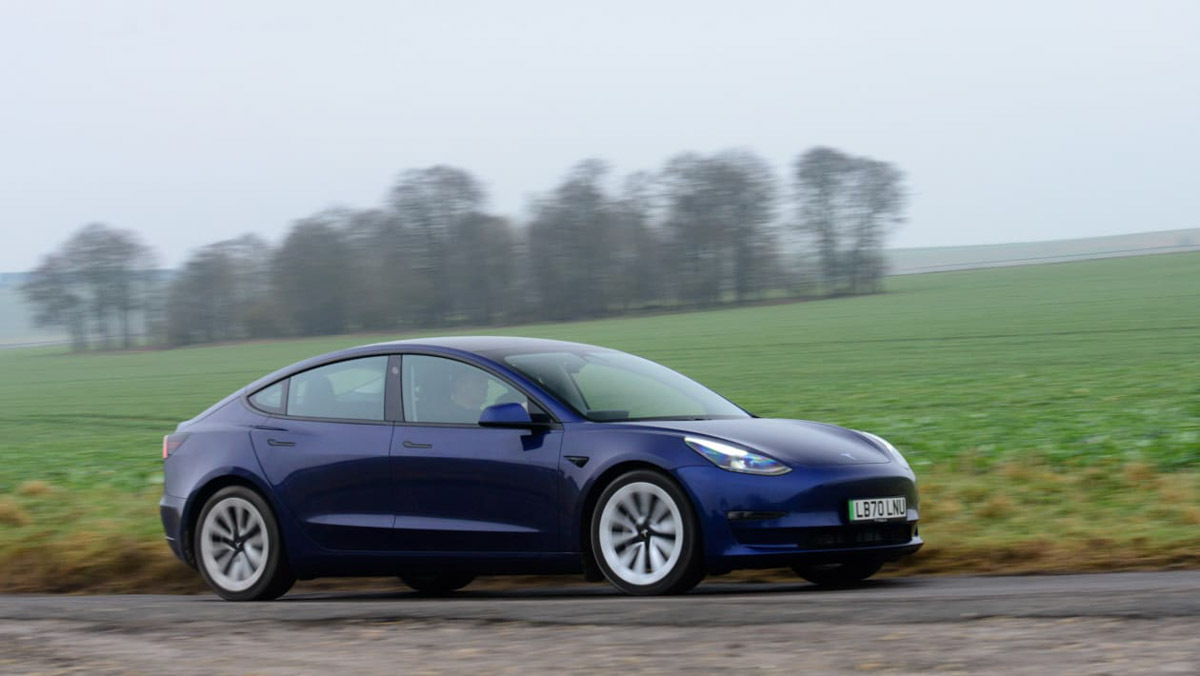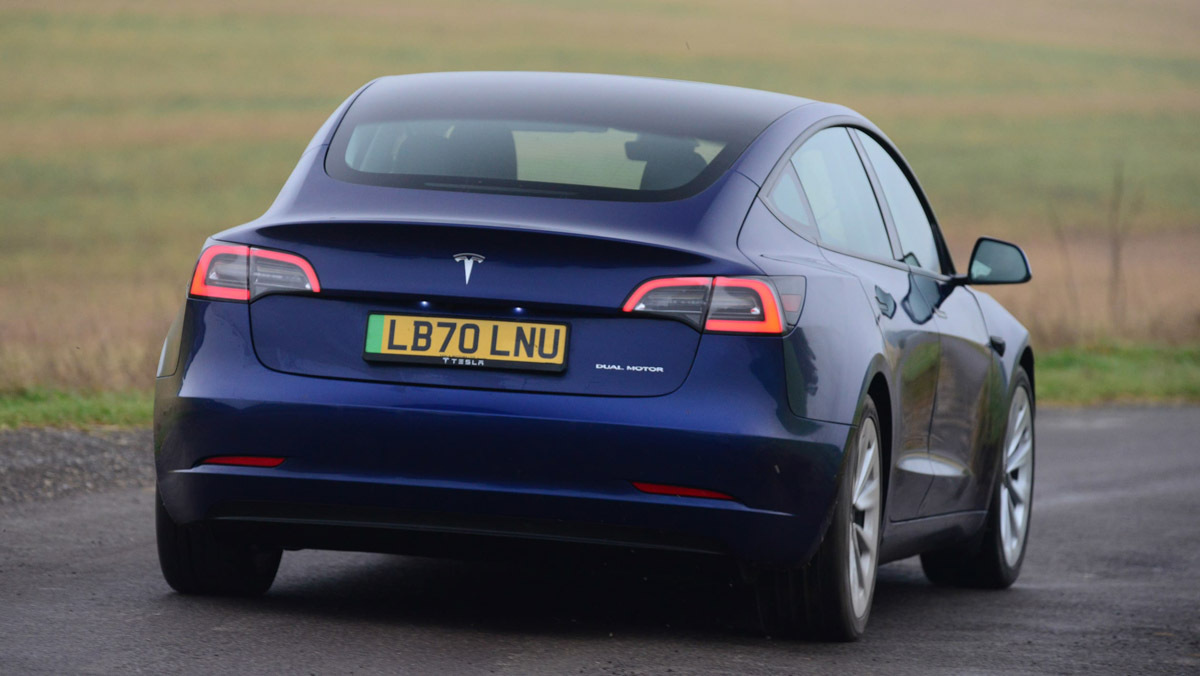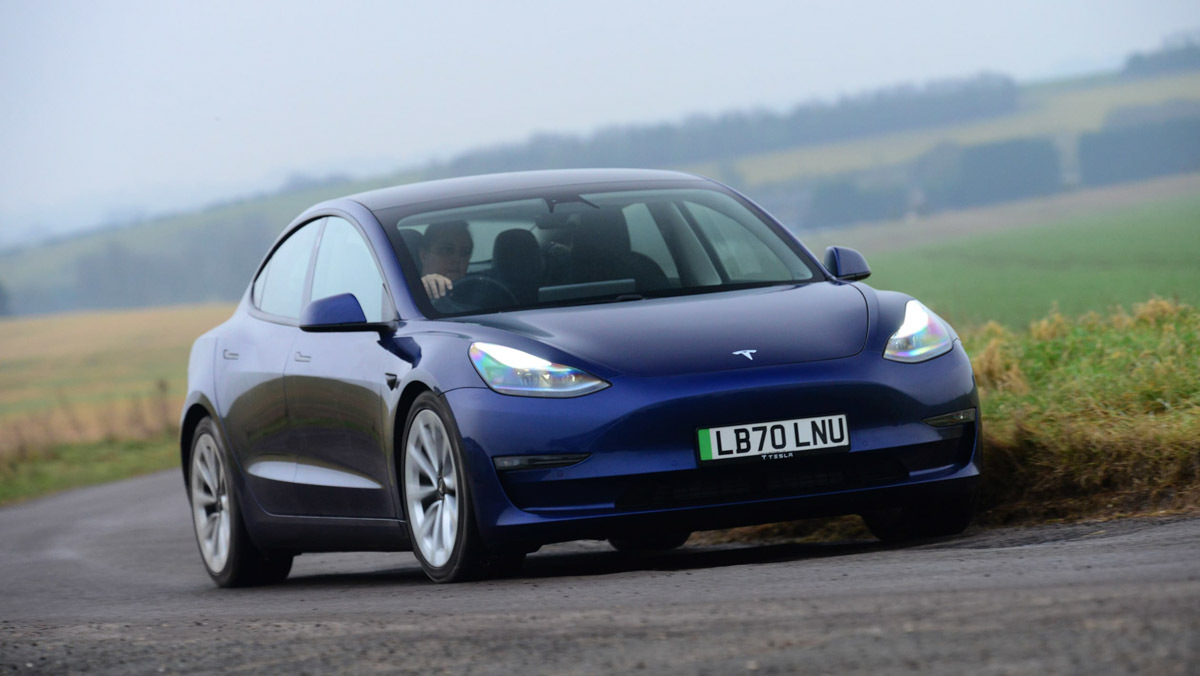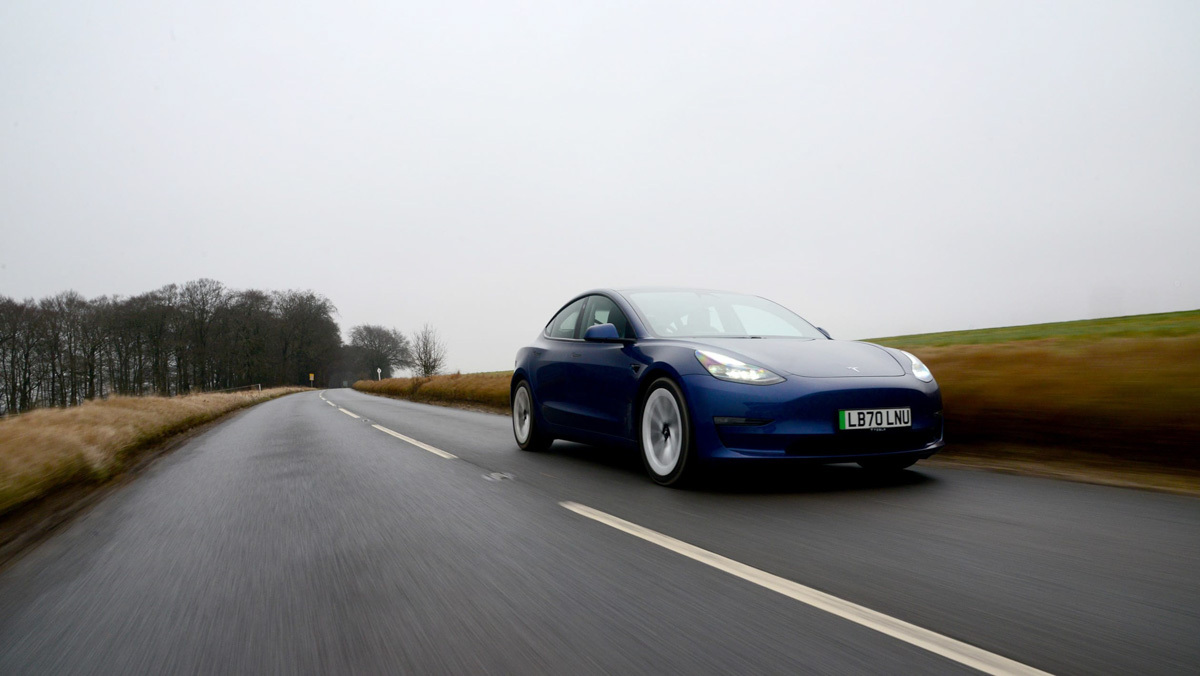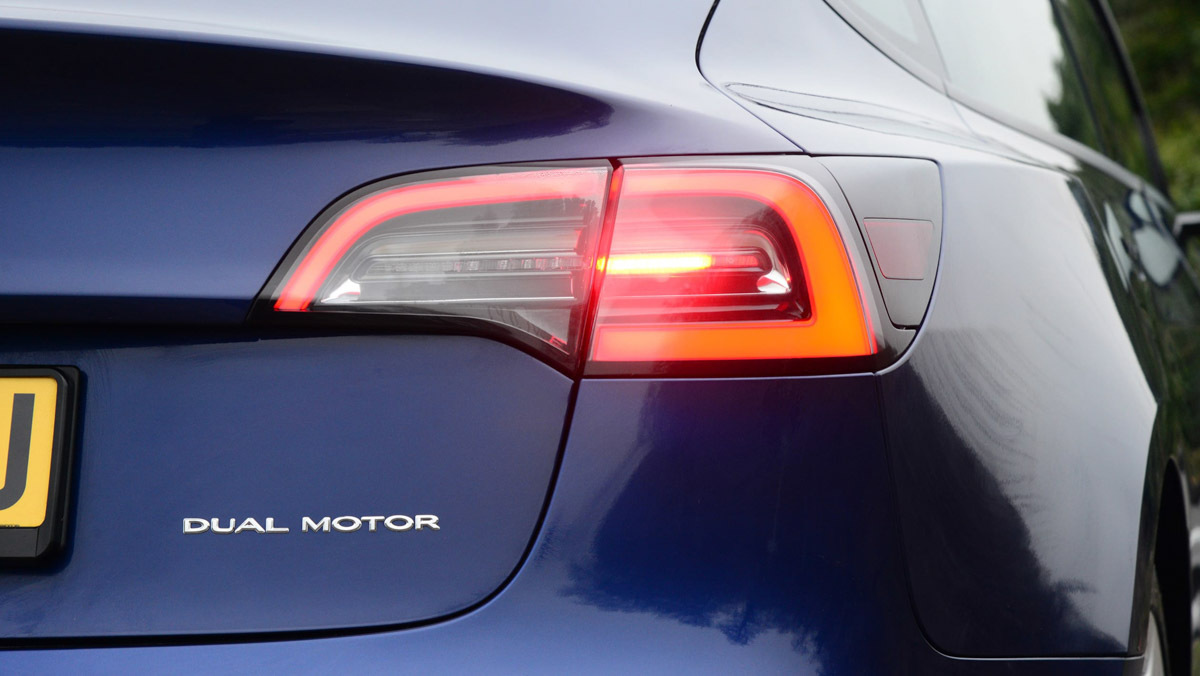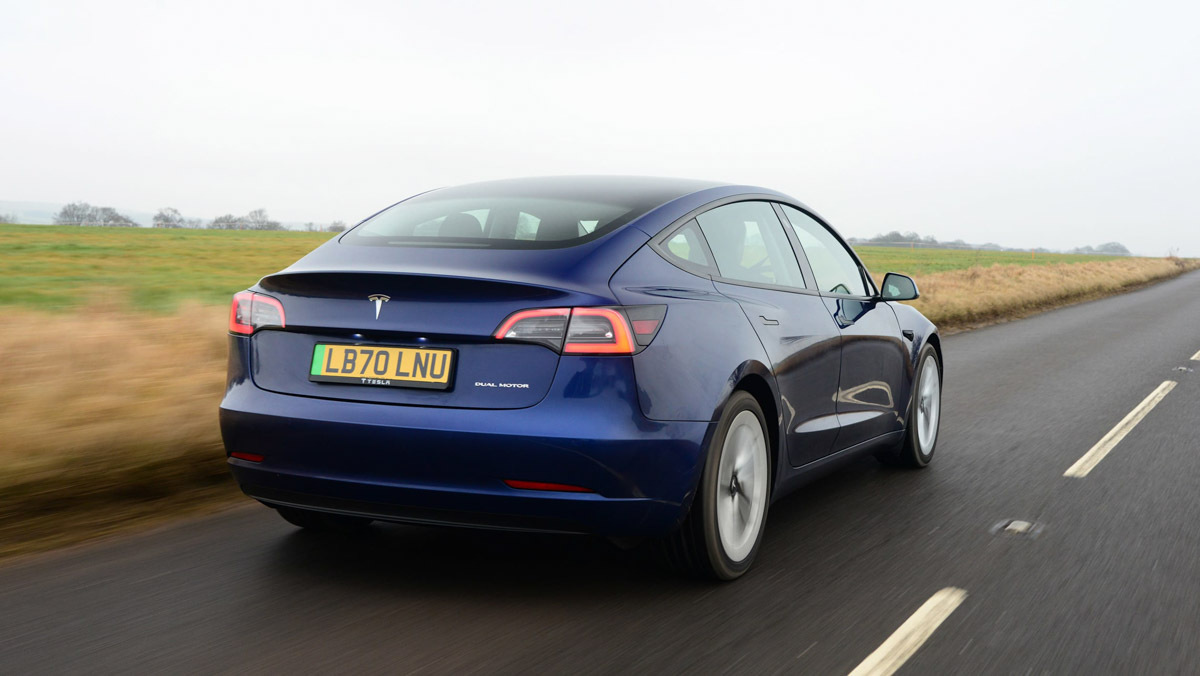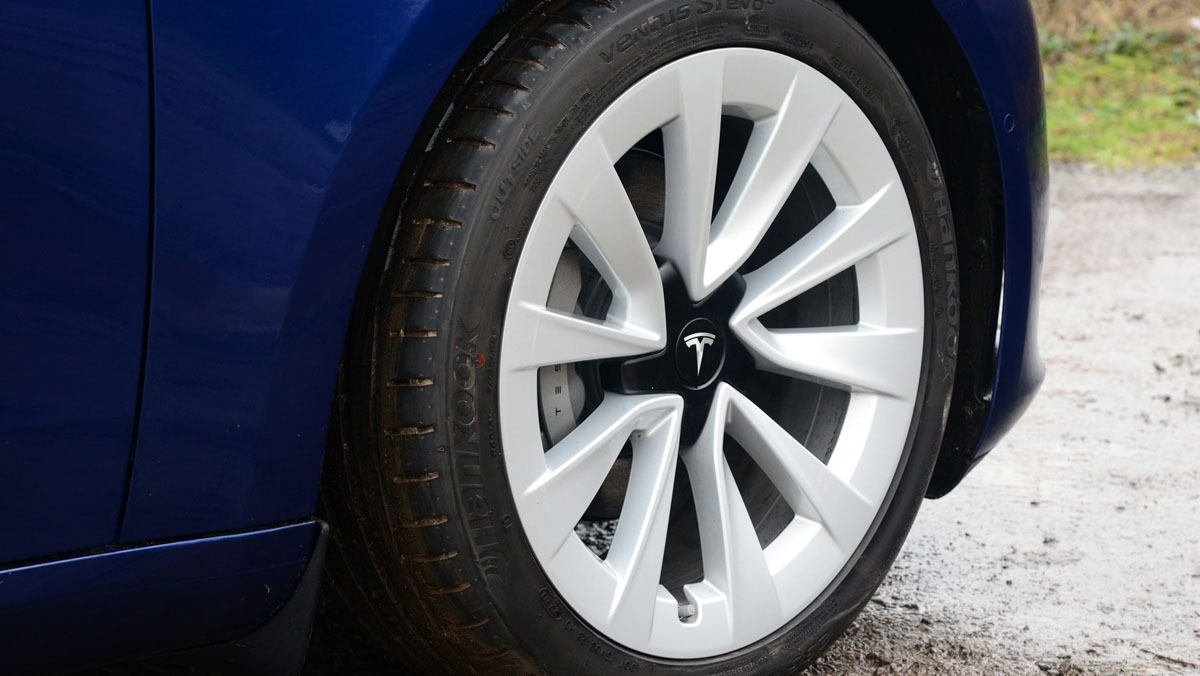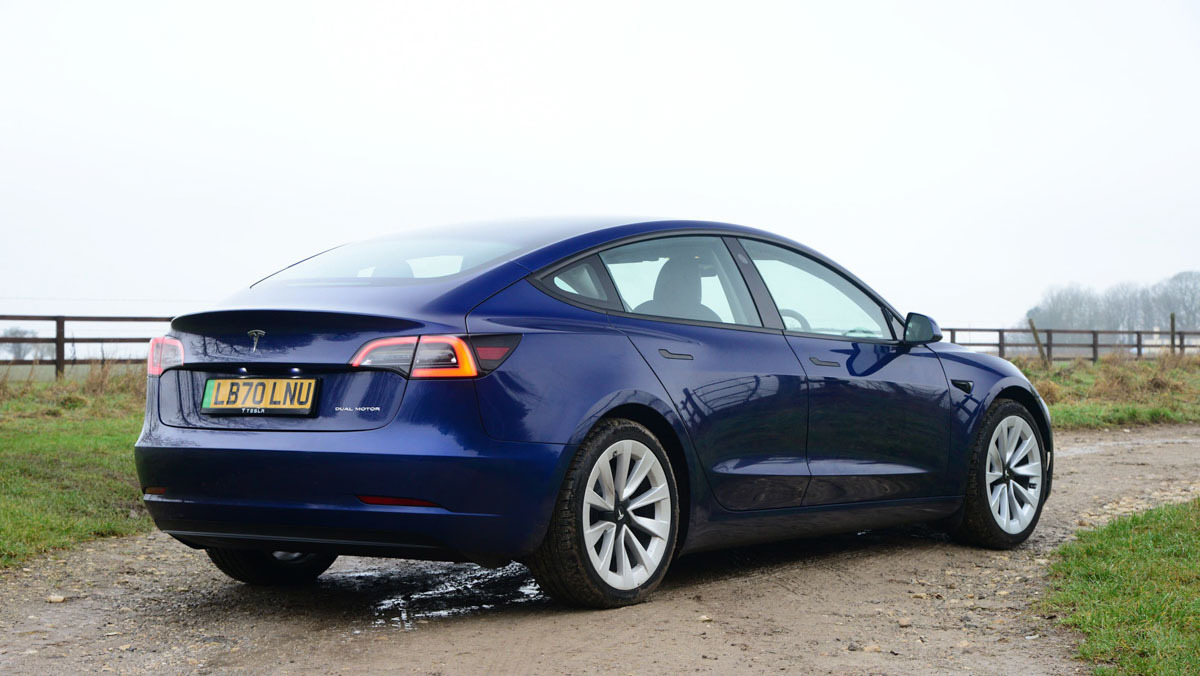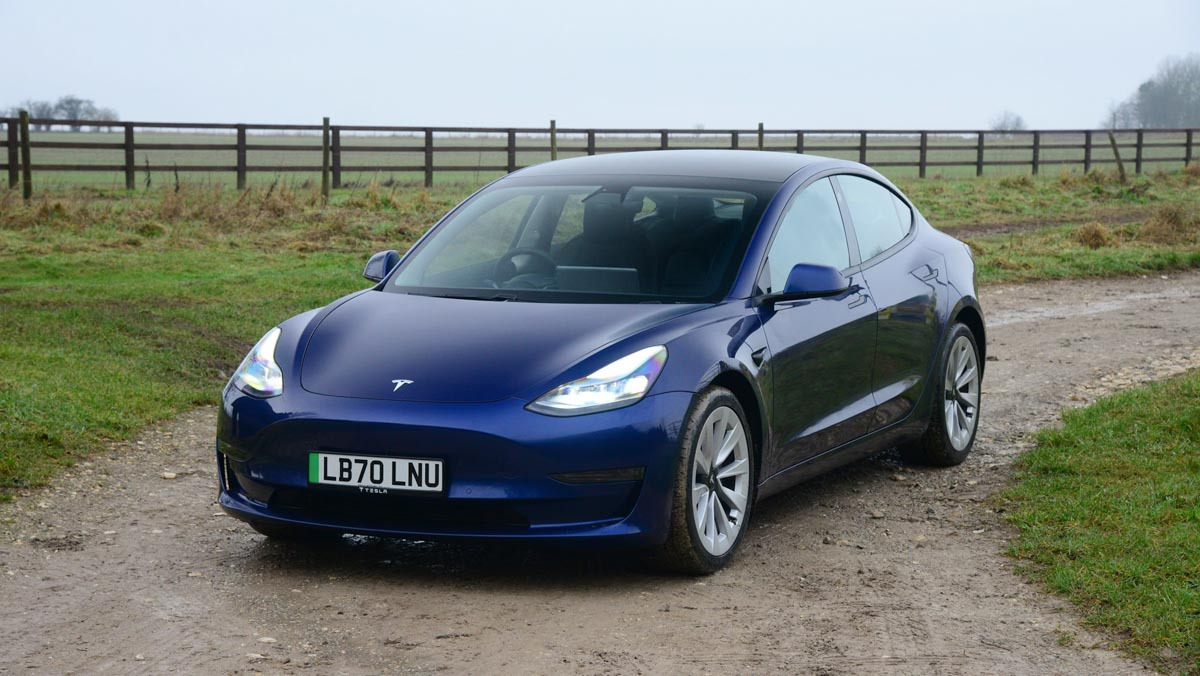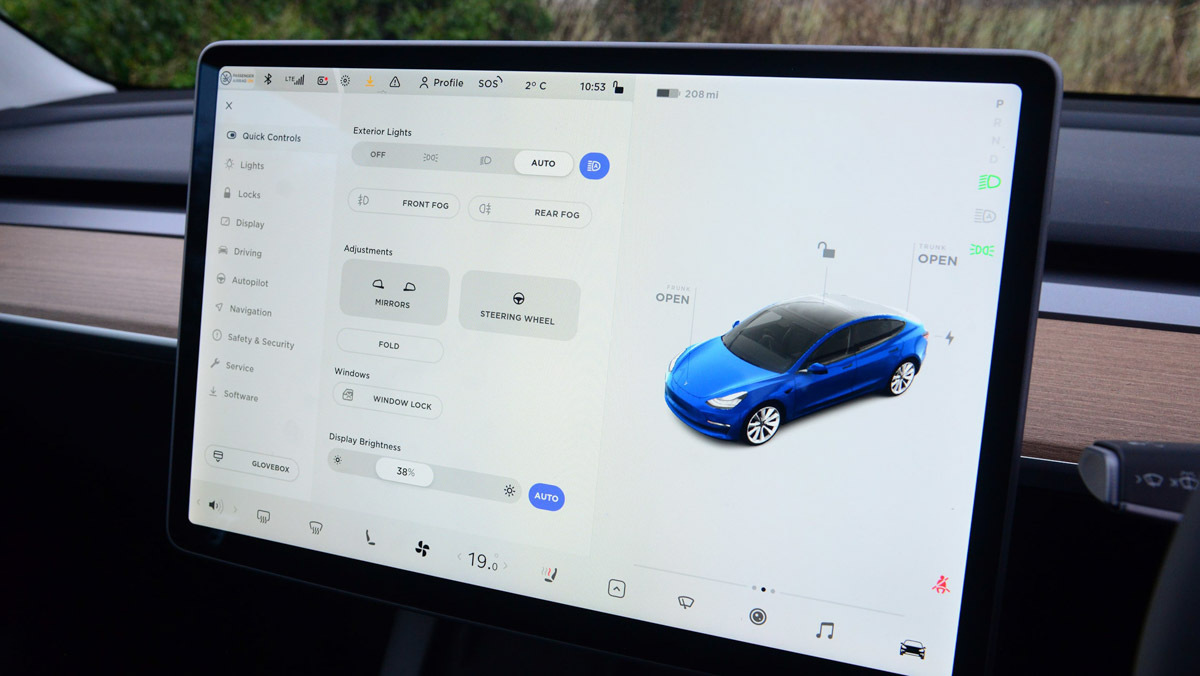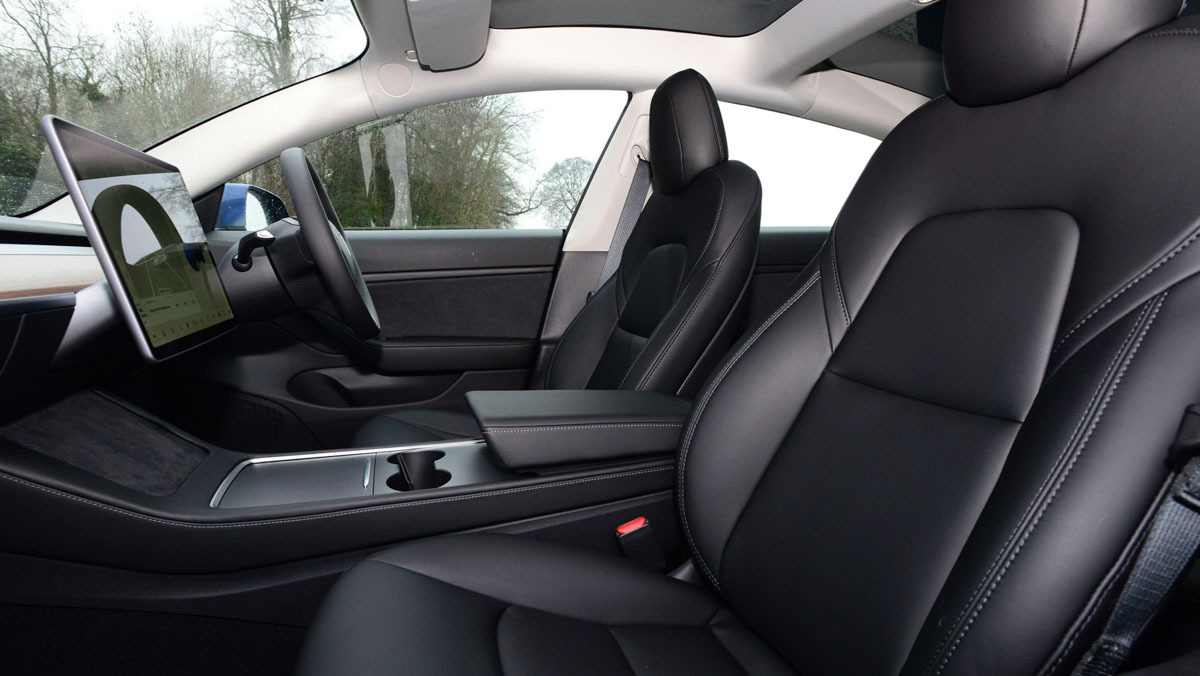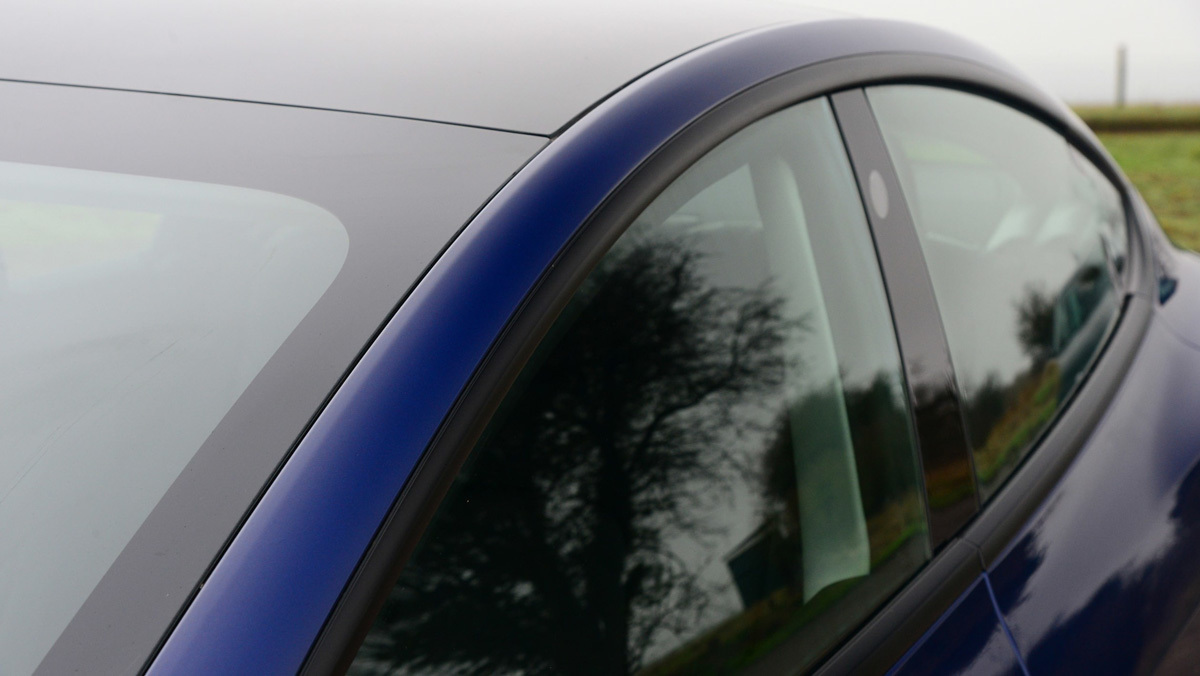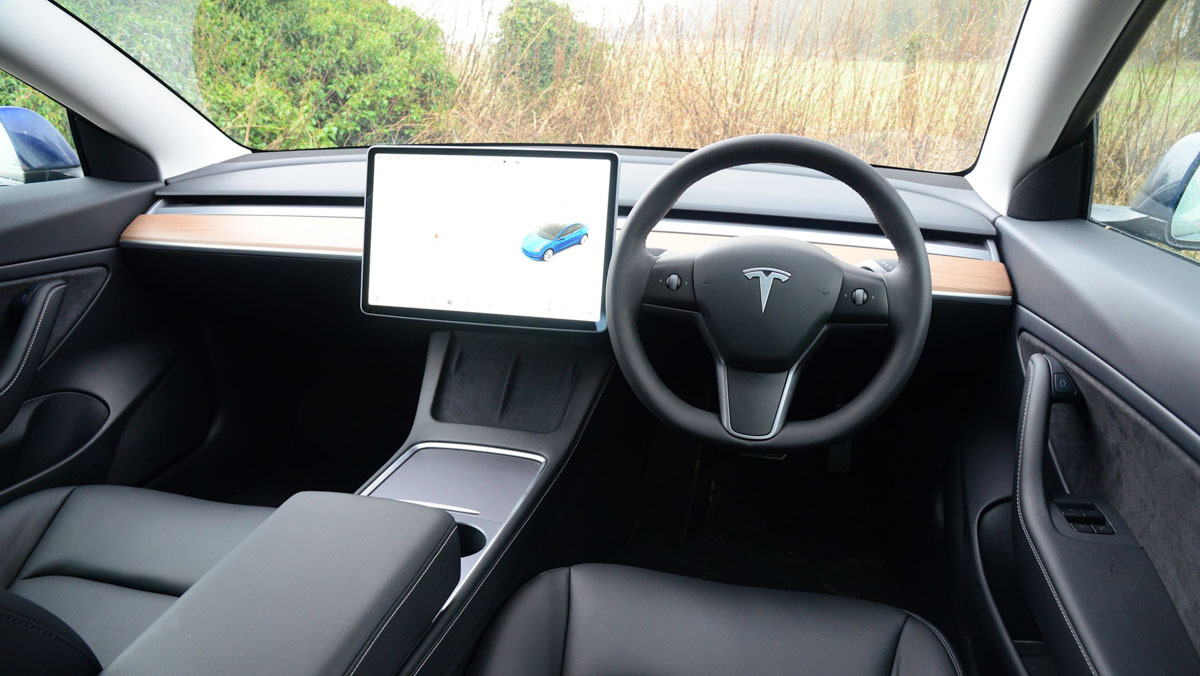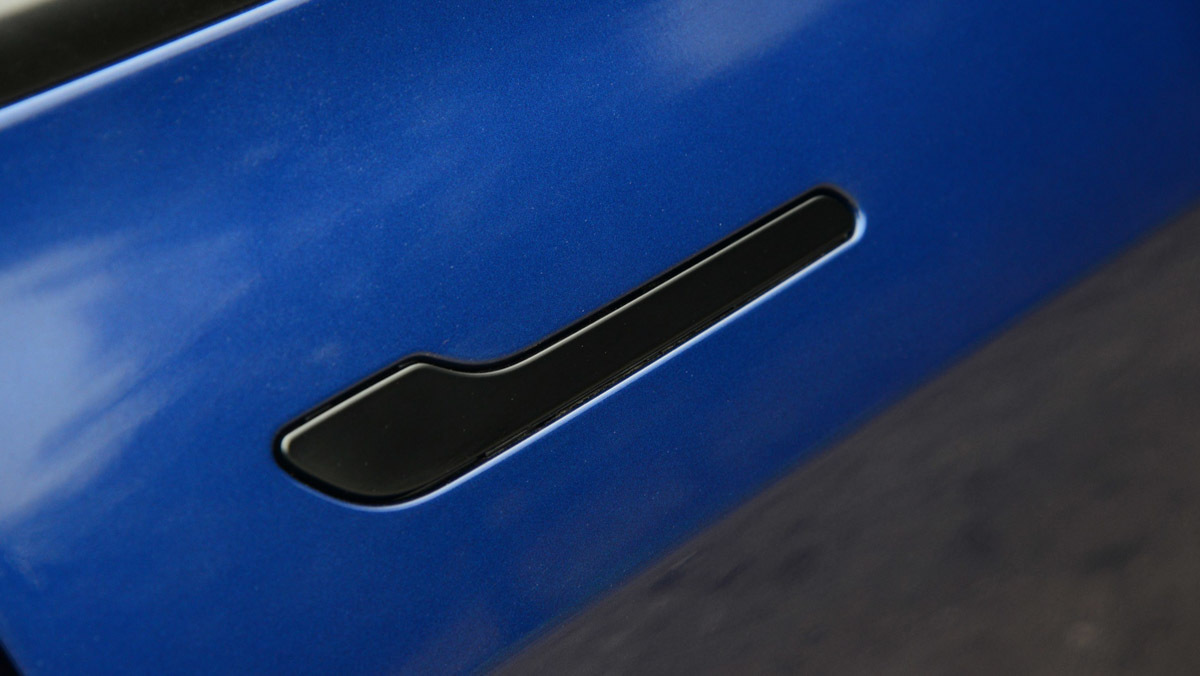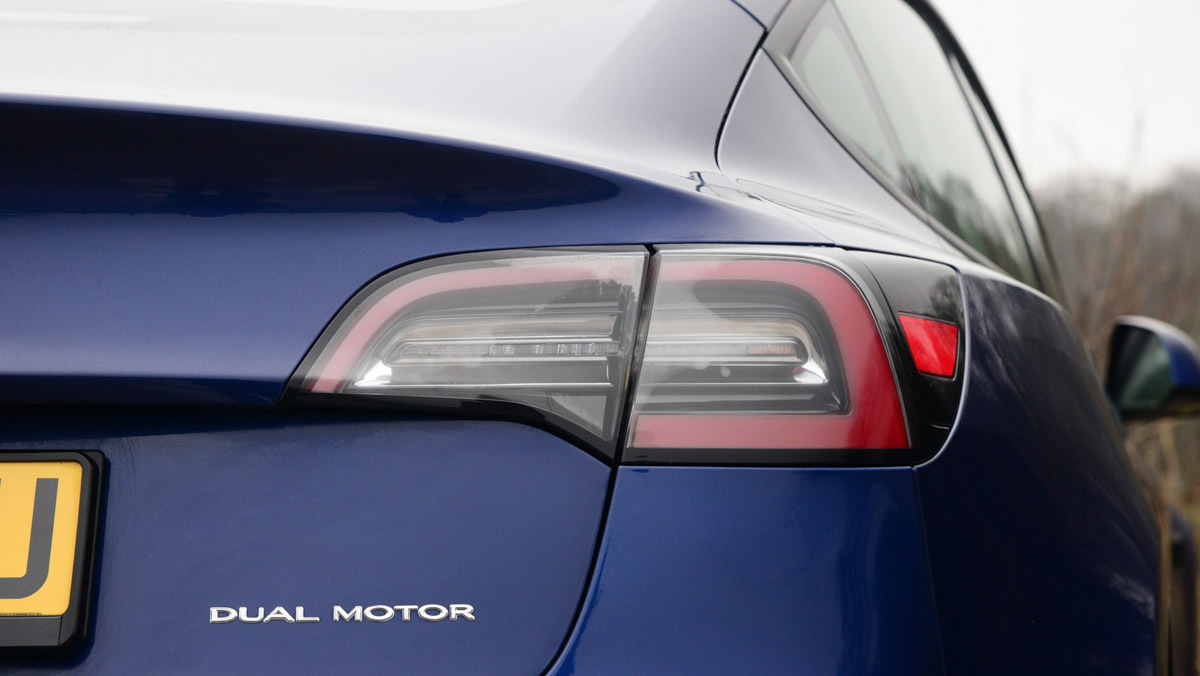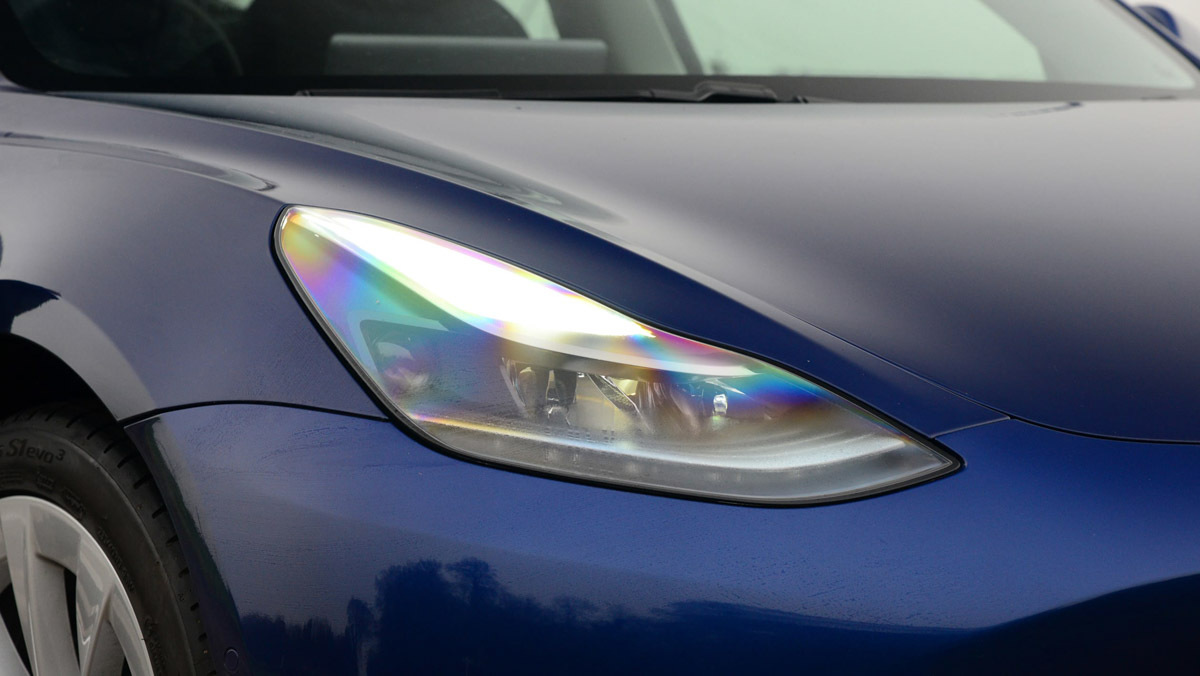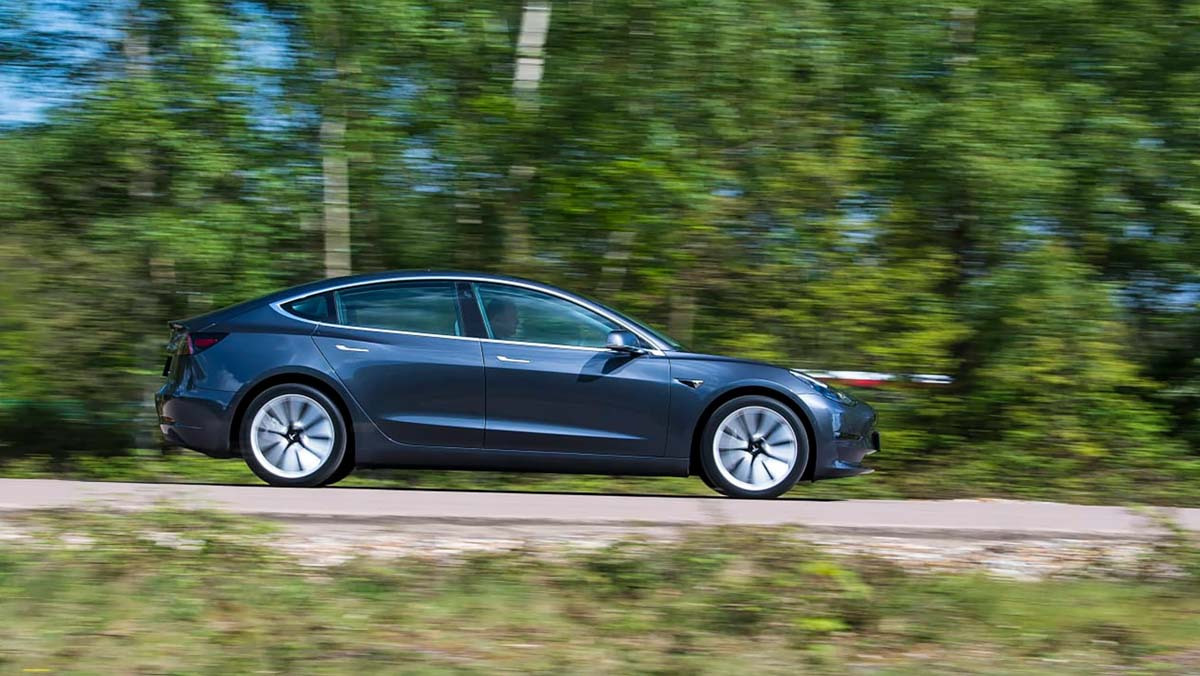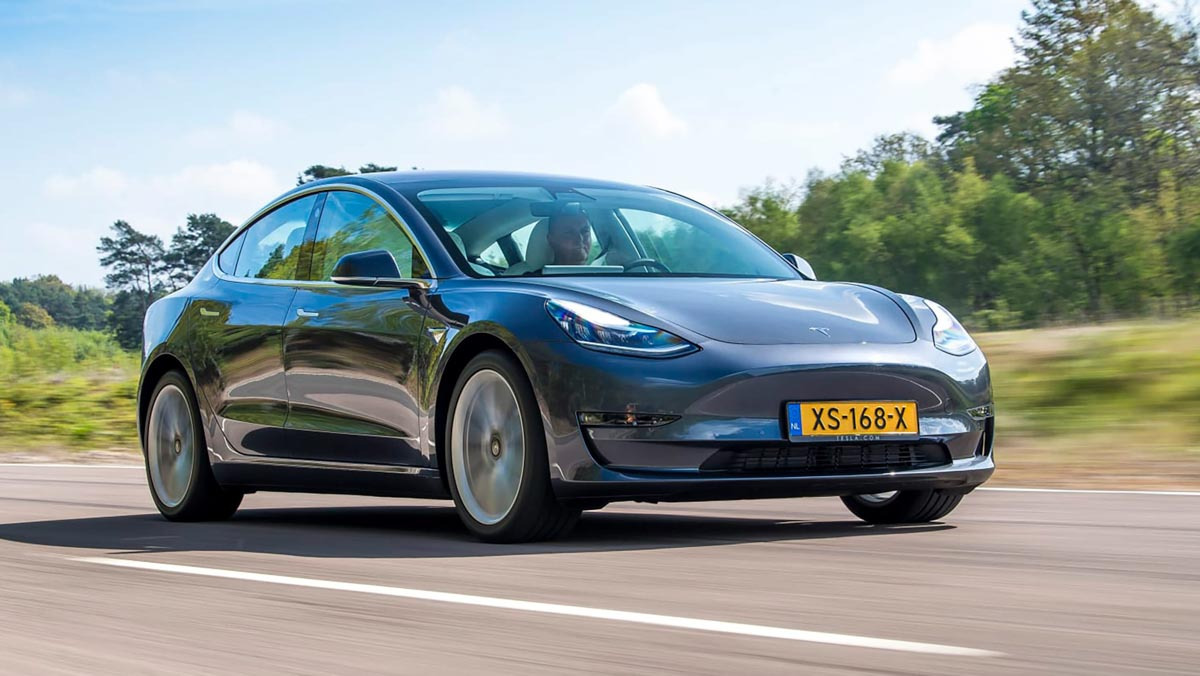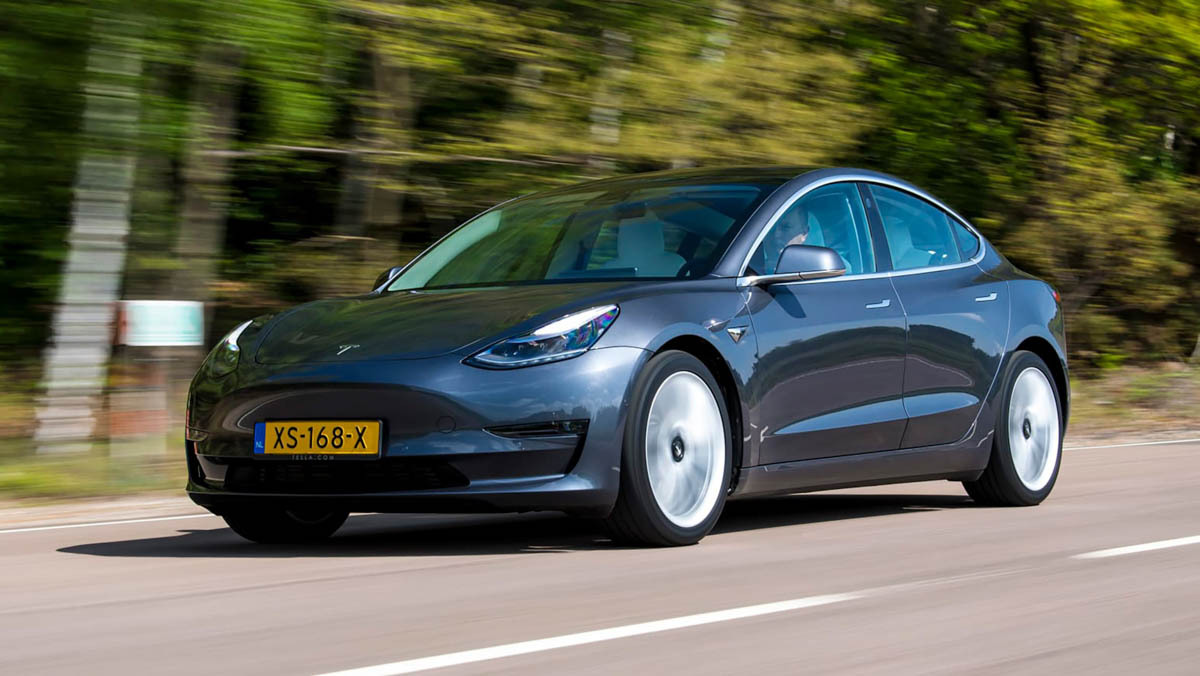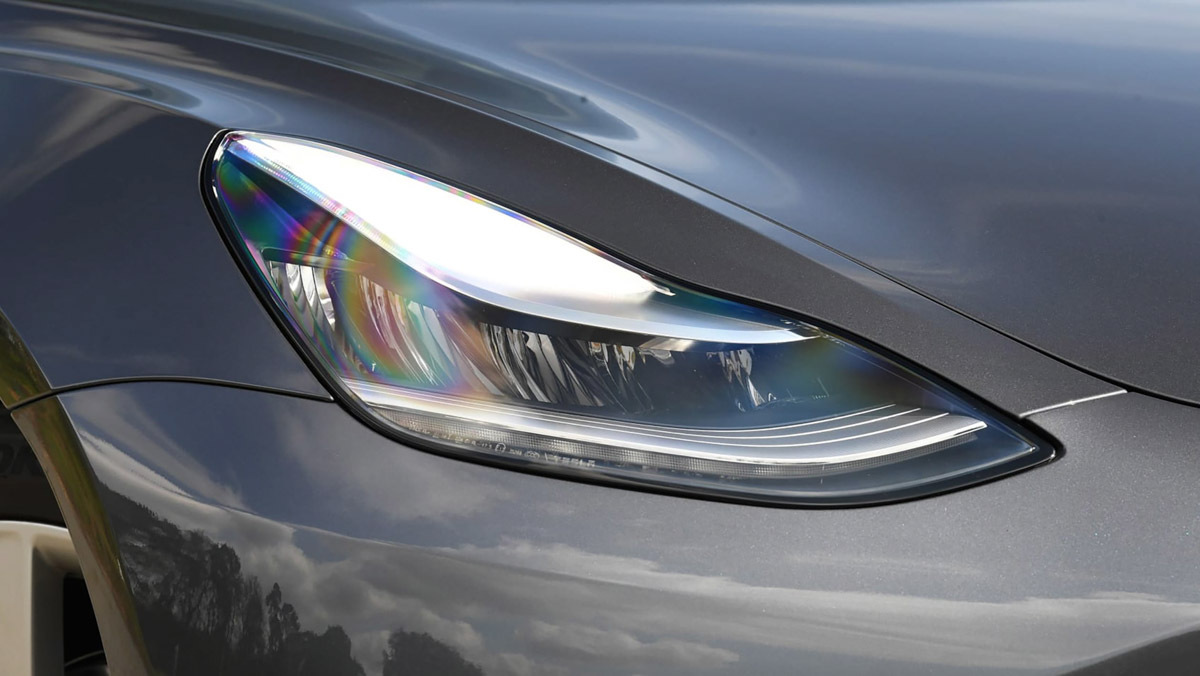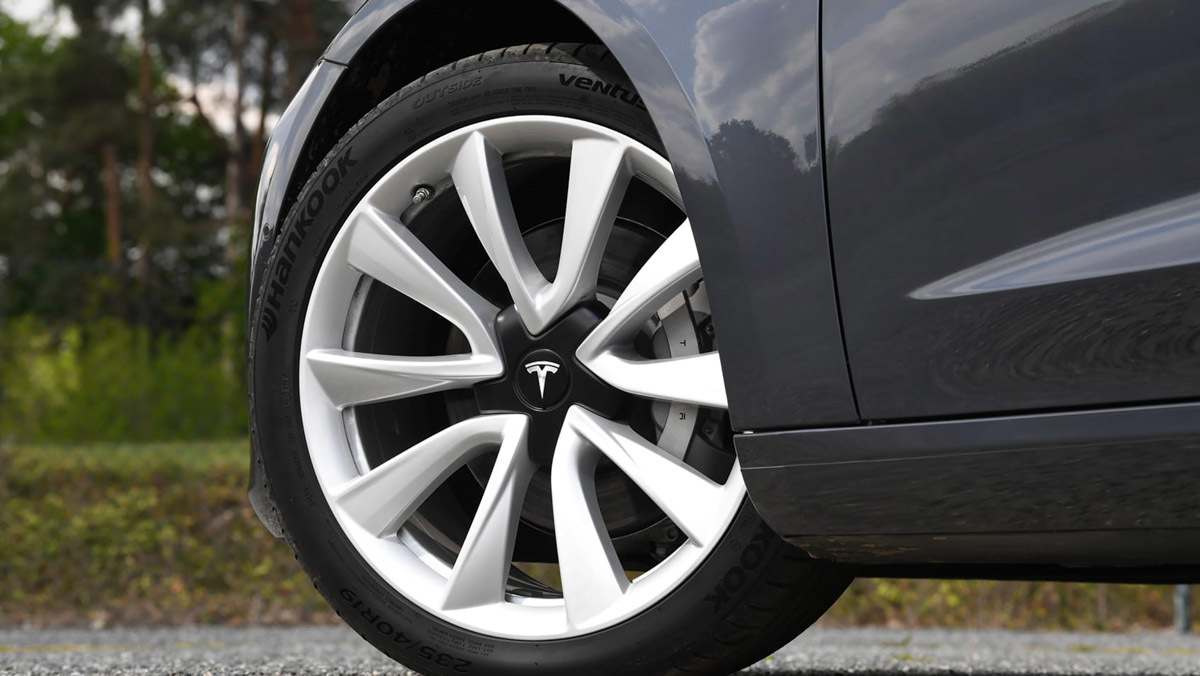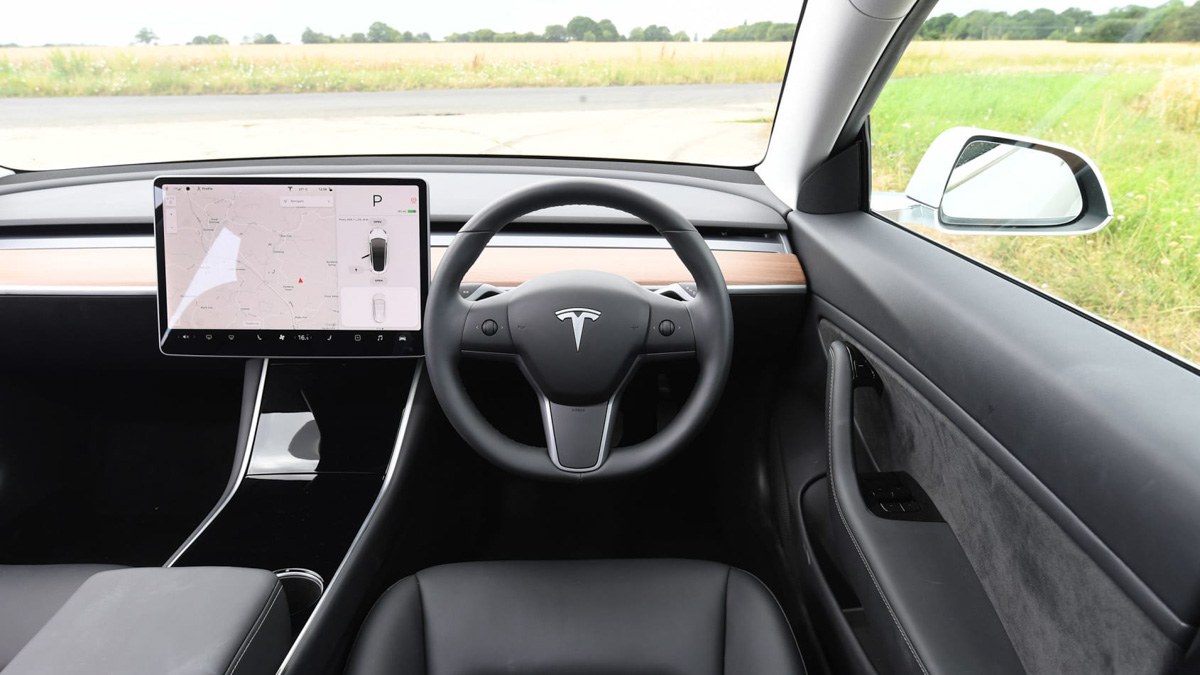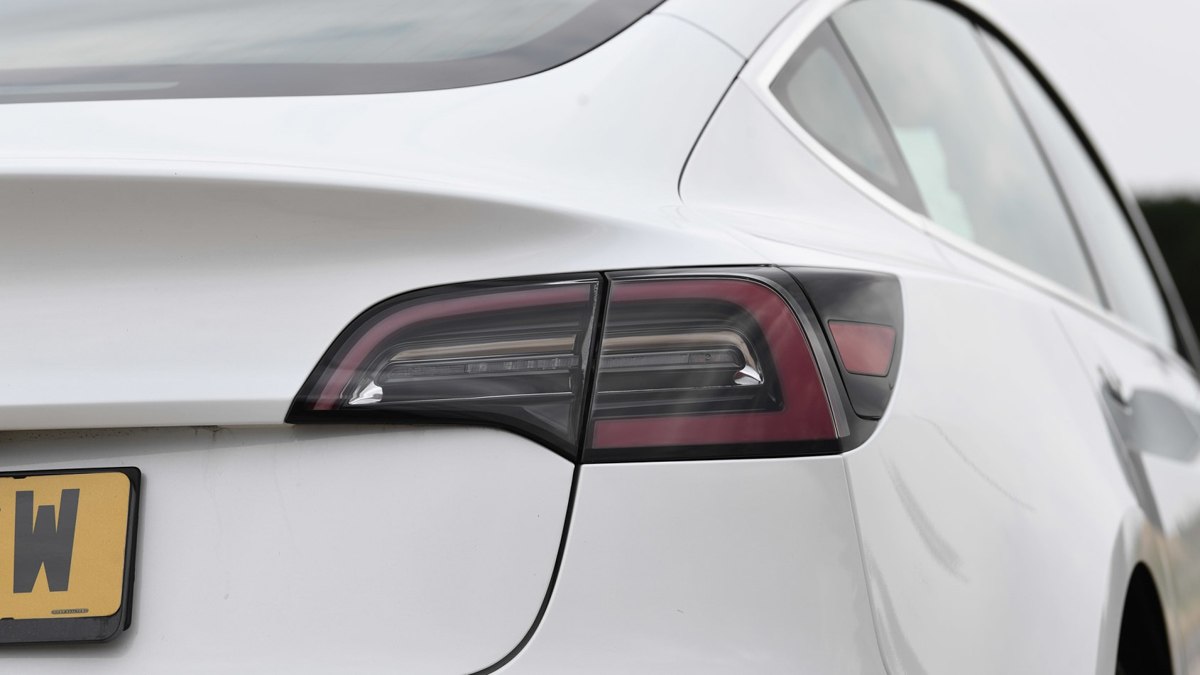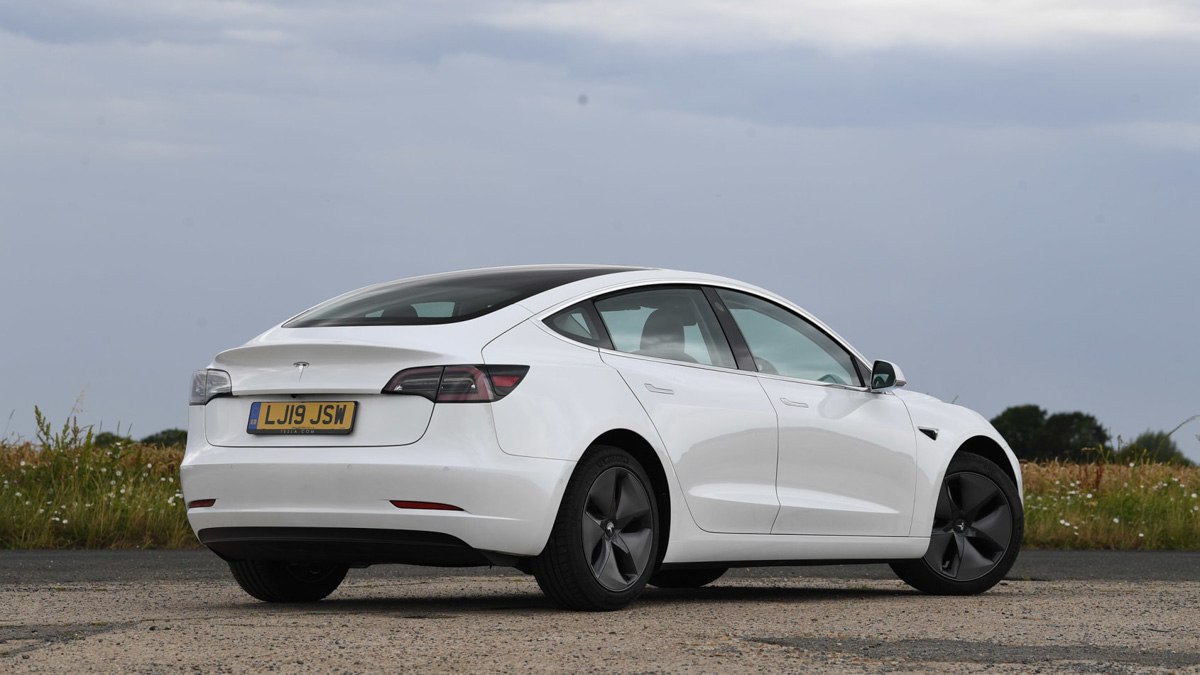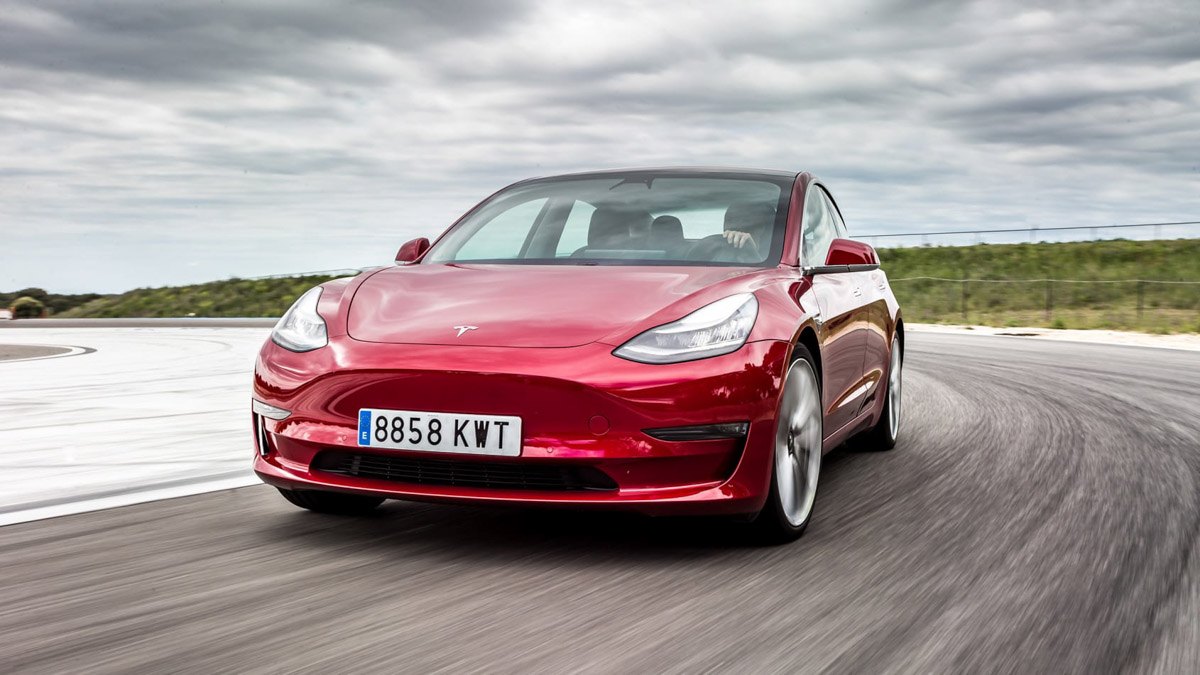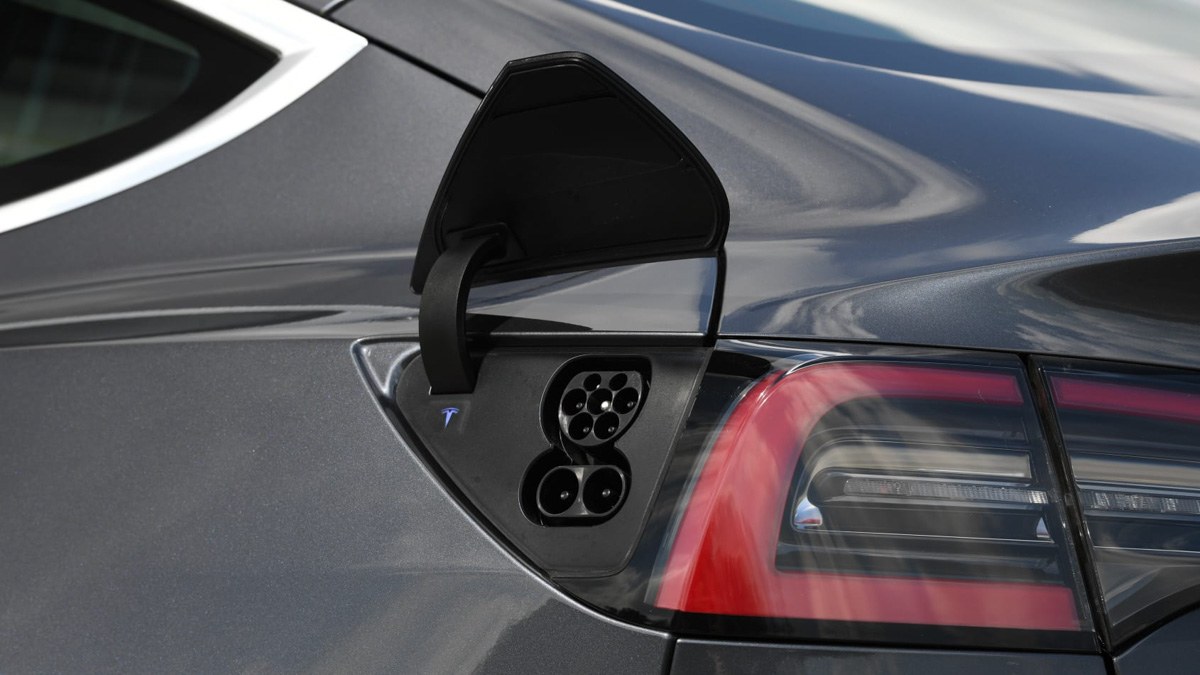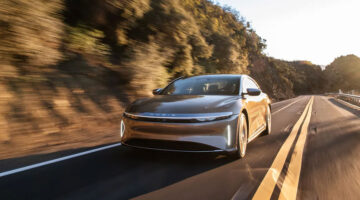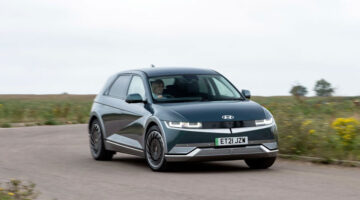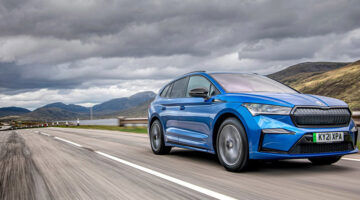Can the Tesla Model 3 really be a willing alternative to a typical executive car? It makes a great go at it, but there are compromises.
| Incredible, otherworldly performance with some genuine dynamic nuance | |
| Still feels underdeveloped and poorly constructed |
It’s fair to say that the Tesla Model 3 has now officially embedded itself into the British motoring landscape. While it’s sometimes impossible to ignore the controversy around Tesla and the way it operates, the impact it’s had in integrating electric cars into the psyche of modern everyday motorists has been profound, whether you’re a fan of electric cars or not.
With a whole brethren of rivals coming from all sides, Tesla has given the Model 3 a mild update. Instead of a traditional facelift, the 2021 Model 3 features a spread of tiny detail changes to the styling and tech.
> 322kph Tesla Model S Plaid set for 2021 launch
We’re also here to decipher if the Model 3’s infamous build quality has been attended to, and whether it really is now a realistic alternative to traditional executive cars for those, who like us, are still critical of electric cars and the benefits they offer.
Prices, specs and rivals
The Tesla Model 3 range is essentially straightforward and easy to define. There are three models available, made up of a price-leading single-motor base car, and two dual-motor variants that also have a larger battery capacity and range. The basic Standard Range Plus Model 3 starts at $56,173. The WLTP estimated range is currently rated at 430 kilometers, which is impressive given the relatively small 46kWh battery pack. The Long Range model, which includes a second electric motor on the front axle, is a chunkier $65,191, but also expands on the estimated range to 580 kilometers thanks to the larger 74kWh battery. Topping the range is the Model 3 Performance, costing from $78,371. Its range is down slightly at 566 kilometers, but its performance is considerably more potent.
Specifications are high across the range, with a 15-inch touchscreen standard on all models and which includes the Model 3’s impressive user interface system that controls essentially every element of the car. More traditional car-like features include electric seats with faux leather trim, a glazed roof, auto-dimming and folding mirrors and climate control, are also standard fit. Long Range and Performance models upgrade to a ‘Premium Interior’, satellite mapping on the infotainment screen, an updated hi-fi, and heated front and rear seats.
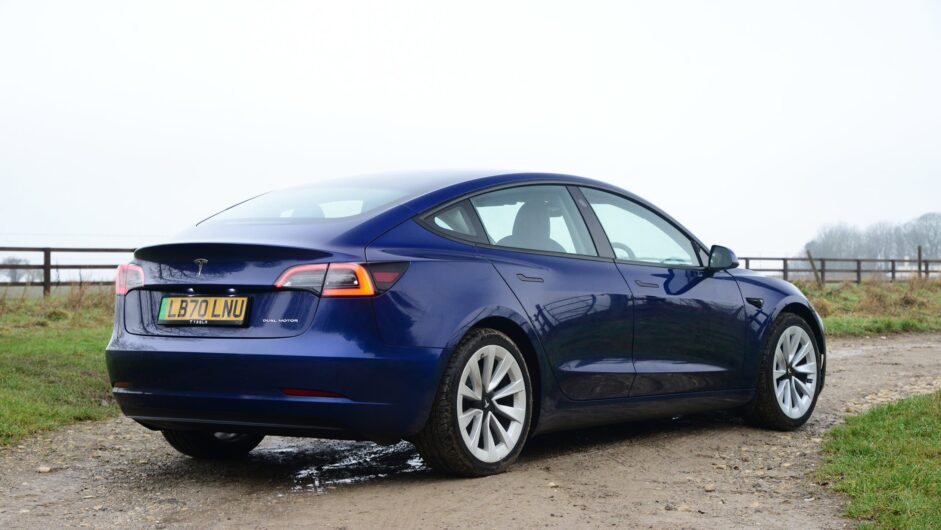
Performance models then build on the Model 3’s technical components with a new set of 20-inch wheels, bigger brakes, lowered suspension, a carbonfibre lip spoiler and higher 260kph top speed. For the full ‘Tesla’ feel, all models are able to be fitted with a white interior, turning the already airy cabin into a sci-fi movie set.
Full electric rivals such as the new Polestar 2 match the Long Range models in terms of pricing and performance. Otherwise the Tesla seems to sit in a middle-market vacuum, priced above mainstream electric hatchbacks such as theVolkswagen ID.3 and Renault Zoe, but still substantially below bigger premium electric SUVs such as the Audi E-tron and Jaguar I-Pace.
Veer back into the dangerous world of the fuel pump and all the compact executive offerings such as a BMW 320d M Sport and its rivals match the entry-level Model 3 on price. For the Performance’s, erm… performance, there is literally nothing out there to match it – an Audi TT RS will set you back around the same money, but takes another 0.7sec to get to 100kph and is less able in the corners. An Alpine A110 is more entertaining more of the time, but could not be considered a rival aside from those who wish to spend around $70k on anything fast and fun. Consider a like-for-like rival such as an Audi RS5 Sportback or Mercedes-AMG C63 S and they’ll set you back a more substantial $100-110k, and be slower and far more expensive to run. You can understand now why, on paper, Teslas can be so appealing.
Engine, transmission and technical details
Without a traditional engine the Model 3’s technical makeup is quite simple. The layout is of the same skateboard-style chassis that Tesla pioneered with the Model S, placing the batteries in a single, low-mounted sheet under the cabin. All models feature a powered rear axle, with the motor and transmission sat between the rear wheels. Dual-motor versions pick up a second motor on the front axle for improved acceleration and traction. Both suspension systems are classified as multi-link, but differ from the usual layouts thanks to the inherently different requirements of the electric powertrain’s technical packaging.
Power figures do vary across the range, with entry-level models rated at an equivalent 279bhp, which is directed to the rear wheels in between which the motor is mounted through a direct-drive transmission. Long Range models build on this with a second front-mounted motor for a peak of 406bhp combined, which is the important part as the motors produce different power curves over the course of the rev band (yes, electric cars still have those), but for the sake of simplicity, combined is about close enough. The Performance model has a higher 466bhp combined figure, and no doubt plenty of software changes aiding its startlingly fast acceleration.
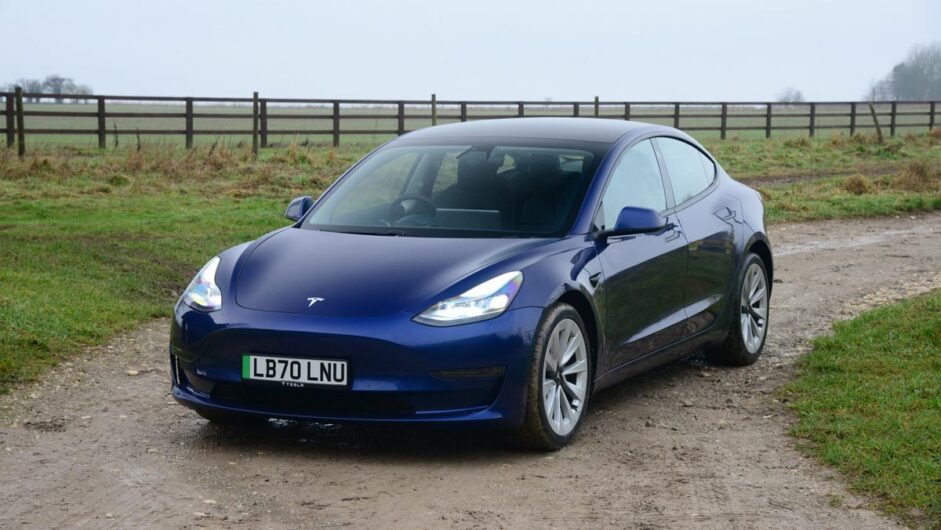
The Model 3 doesn’t have a multi-gear transmission as you’ll find on a Porsche Taycan, but the Model 3’s Amercian origins do mean that the high-speed cruising the Porsche has undoubtedly been designed for hasn’t really been taken into consideration. Track mode is the heart of the Model 3 Performance. It’s selected without fanfare, with just one on-screen disclaimer to bat away with a further press before it’s live. In normal automotive parlance it sounds like it should be an ESP setting, but it’s far, far more than that.
Not only are the battery and motors set for maximum performance, but the strategy of the 3’s two cooling circuits evolves to keep them as cool as possible (even pre-cooling them), heat being the great enemy of an EV. The engineers we spoke to are confident the Performance could complete hard sessions at a trackday and not experience any major drop-off in power, and that the battery could realistically last until lunchtime, when a charge while you ate your sandwiches would see it ready for an afternoon’s lapping. But it’s what it does to the dynamics that’s really interesting. The Model 3 wasn’t conceived to be a sporting machine, but late in its development Elon Musk decreed that it should be quicker around a track than a BMW M3, and at that point an engineer stuck his hand up and confessed he’d been working on something that might help with that…
Performance and 0-100 time
Let’s start with the Performance, because by gosh does it have plenty. Tesla quotes the 0-96 (not 100kph) at 3.2sec – an astounding number, but especially so when applied to a mid-size executive hatchback. The Model 3 Performance accelerates with such aggression it almost hurts. If you make the mistake of stepping into the Model 3 without Sports mode activated, performance can initially feel a little underwhelming. But, select the right acceleration mode, give the motors a little time to warm up and it genuinely catches you off guard.
A standing start is one thing, but it’s the roll-on acceleration that feels almost otherworldly. To say that previous to driving the Tesla Model 3 this journalist had two weeks of two V10 supercars, yet was still blown away by the $60k Tesla, says much. Lesser Long Range and Standard Range Plus models offer the performance their numbers suggest, but all Model 3s feel like they have more than enough performance for everyday driving. Weight figures are typically high, but then perhaps not quite as chunky as some might suspect, explaining the Model 3’s performance relative to its far more powerful Model S sibling. Standard single-motor Model 3s hit the scale at 1645kg, which put into context is about the same as a rear-wheel-drive aluminium Jaguar XE petrol, while dual-motor versions, with their larger battery packs, come in a couple of hundred kilograms heavier at 1847kg.
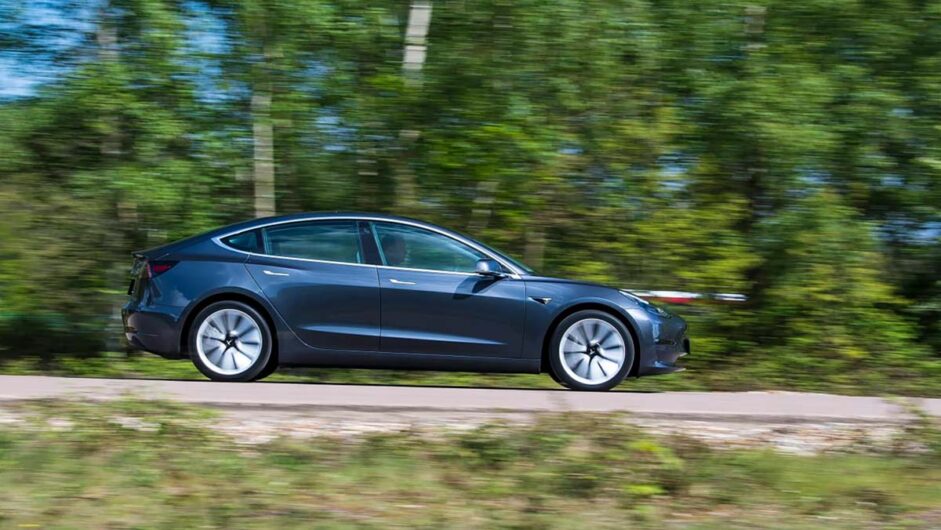
Ride and handling
The biggest surprise with the Model 3 is not the acceleration, rather the way it handles at high and low speeds. It feels like the engineers really understood how to tailor the handling balance to the Model 3’s technical makeup. Performance models do ride firmly, the 20-inch wheels not particularly relenting over smaller intrusions like those on the most deftly of damped Audi RS models, but body control is quite impressive, especially considering the Model 3’s sometimes violently rapid movements.
I say movements, as Tesla’s engineers have integrated a very quick steering rack, which combined with the incredible acceleration makes driving quickly in pretty much all scenarios spookily easy. The steering itself is largely feel-free, but it is trustworthy, accurate, and surprisingly heavy in its turn of response, giving you a solid and consistent touchpoint to really start to explore the chassis’ inherent composure. The Performance model’s Michelin Pilot Sport tyres are another sign this Tesla is no needless eco-warrior either, as the front end has no trouble hanging around at low speeds, and while the inherent balance means there is no real untoward weight distribution to manipulate, the rear-motor’s higher torque rating does begin to make itself felt as you begin to realise there is even a playful side to the chassis.
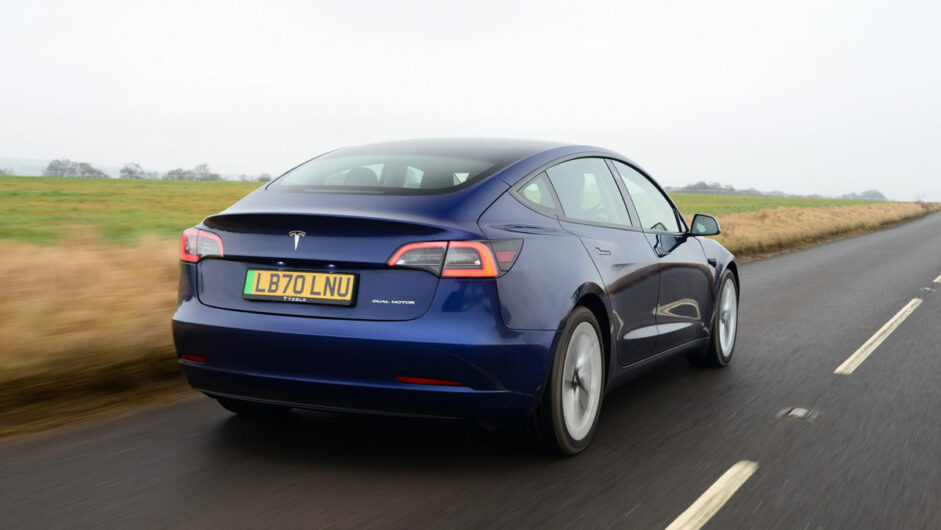
In Track mode, the ESP is effectively switched off, and the software works in a very different way to the normal, traction-enhancing programming. How different? Well, turn into a corner on a circuit, as we did at Paul Ricard in the south of France, be confident on the throttle, and the rear will step out like it’s on castors. As long as you haven’t overworked the outside front on turn-in, the Performance wants to oversteer, and strongly. Keeping it there involves a specific technique, because feathering the throttle confuses things and applying lots of corrective lock makes the software want to hit ‘game over’ ASAP. Instead, a small, early hint of correction and a steady throttle settle the car into an absurd, tyre-shredding drift, which with the necessary deftness can have the 3 donutting around a skidpan in a continuous arc. And if you do overstep the mark, a bootful of throttle will send a heap of torque to the front axle, pulling the car back from the brink at the sort of angle even Gigi Galli might think was unrecoverable. Get it wrong, though, and you will spin, in a silent, helpless washout, but the engineers have tried to pitch the system at somewhere between novice and expert wheelman. It’s like nothing I’ve ever experienced before.
Do we miss the sound of a Lamborghini V12, a Mezger flat-six or the straight-six in an E46 M3? Of course we do. Who wouldn’t? But do we miss the sound and vibration of a 2.0 TDI, however refined, and the operation of the ubiquitous ZF eight-speed automatic? No. And that’s important, because as everyday transport the Model 3 is fantastic: smooth, effortless, authoritatively rapid, slightly firm in terms of ride quality but well controlled and rational. But of bigger surprise is the possible emergence of a new strain of the Thrill of Driving, and of dazzling new possibilities for chassis dynamics, which make the Model 3 Performance a car with real relevance to evo. It’s BMW M3 money as well as performance, but tellingly, it doesn’t feel overpriced.
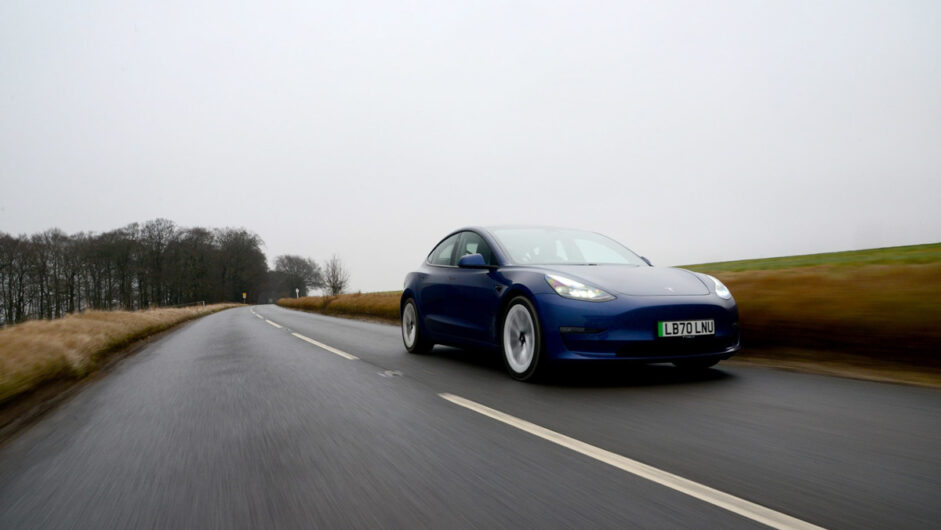
There is one caveat to this experience, though, and it’s the Model 3’s ultimate lack of structural rigidity. There’s just something about the way the body is connected to the battery pack underneath that almost feels loose, as if the different structures have different levels of stiffness that portrays itself in a disconnected feeling between your seat and the car’s centre of mass. This is an issue with all skateboard chassis cars, as it’s something also felt in even the most sorted EVs like the Porsche Taycan, but it’s as if because the centre of gravity sits underneath you, rather than alongside you, there is a feeling of ‘falling’ over the car when cornering at high speeds. This can be explained by the car’s lateral pivot point, which is underneath your own centre of gravity, instead of being aligned with it. It’s a very specific feeling, and one that won’t be identifiable a majority of the time, but it is there, and worth mentioning.
The debate around electric cars, their use of natural resources and issues of infrastructure is immense and ongoing, just as questions over Tesla’s financial stability and its ability to build enough cars, and to the right quality level, persist. Whatever the reality, the Model 3 Performance makes the SUV-based EV efforts of other manufacturers look terribly conservative and uninteresting, and I’ll readily admit it has opened my eyes to a completely new type of driving that, alongside the continued enjoyment of internal combustion engine vehicles, seems to promise a bright and exciting future after all.
L/100km and running costs
Electric car efficiency numbers might often promote overall range rather than L/100km as a defining factor, but like their petrol compatriots, electric cars also use energy at different rates from each other based on a Wh/kilometres (Watt-per-kilometres) rating. Like with L/100km ratings, these numbers are greatly affected by the conditions, (weather particularly in electric cars) but are useful as a standardised comparison. At its most efficient, the Model 3 Standard Range Plus uses electricity at a rate of 251Wh/m, while both dual-motor cars use electricity at more like 291Wh/m. For comparison, the BMW i3 and i3S use only slightly more electricity per kilometres at 298Wh/m, but then they are both rear-wheel drive and only feature the one electric motor.
More stark is the advantage the Model 3 has over smaller rivals, such as the Nissan Leaf (324Wh/M) and Kia e-Niro (301Wh/m). It’s the sheer inefficiency of the big European SUVs that shocks most though, with the Jaguar I-Pace using 443Wh/m and the Audi E-tron a whopping 455Wh/m. The 3-ton-plus Tesla Model X Performance uses 396Wh/m for context. Charging a Model 3 is also less of a cost-free experience than its bigger siblings, with Tesla’s Supercharger network on a cost-per-use basis for all Model 3s, while charging at home can vary widely based on a whole variety of factors.
Actual running costs will still be remarkably low considering the performance though, and maintenance will also be low thanks to the electric motor’s lack of moving parts. Peel apart the innards of an AMG hot-V V8 and you’ll realise how simple an electric motor is in comparison – something that’s surely in the Tesla’s favour in the long run, regardless of actual build quality.
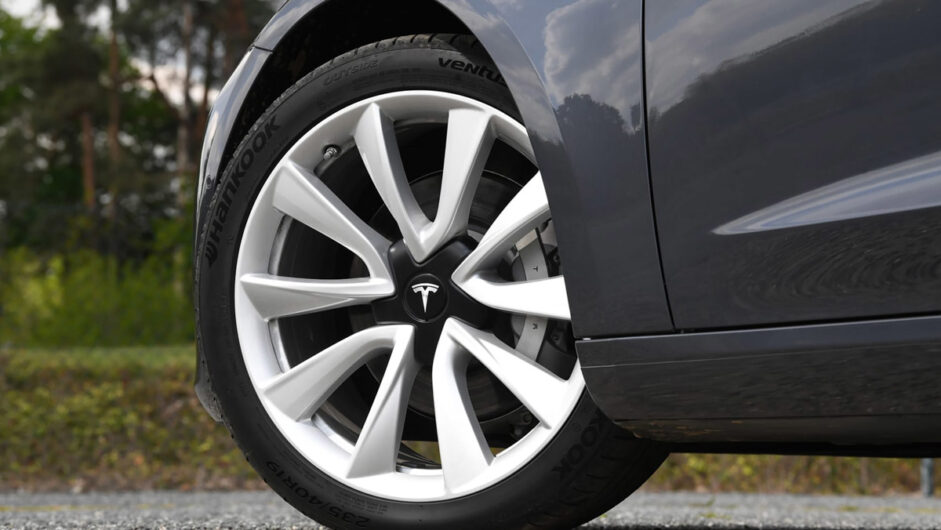
interior and tech
The Model 3’s interior is perhaps the single biggest area where Tesla makes its non-traditional rivals feel behind the curve. The interior layout is beyond simple, even austere to some, but beyond the lack of physical controls, it’s the digital interfaces that shape the way you interact with it. All minor controls, and we mean all of them, are bundled into one interface on that crisp, glossy infotainment screen. Now before you bemoan our usual death-of-the-button monologue, the Model 3 is different, as like no other car its user interface is fast, responsive and intelligently designed enough not to be an issue.
In the same way it only took a couple of days to get used to your first iPhone, so too the Tesla’s interface takes little time to become second nature. Things such as the mirror controls, seat placement and ventilation are all automated to the specific driver depending on the selected driver profile, meaning it rarely requires any adjustment, even if someone else has been in the car before you. The sheer real estate on screen also allows you to see everything you could want or need at the same time, making the default on-screen map less of a hindrance and more akin to a handily placed passenger. Any car-related information is separated into a column close to the driver, and rather than feeling like your essential information is placed on an infotainment screen away from your line of sight, it instead sits just within your peripheral in a big and clear font.
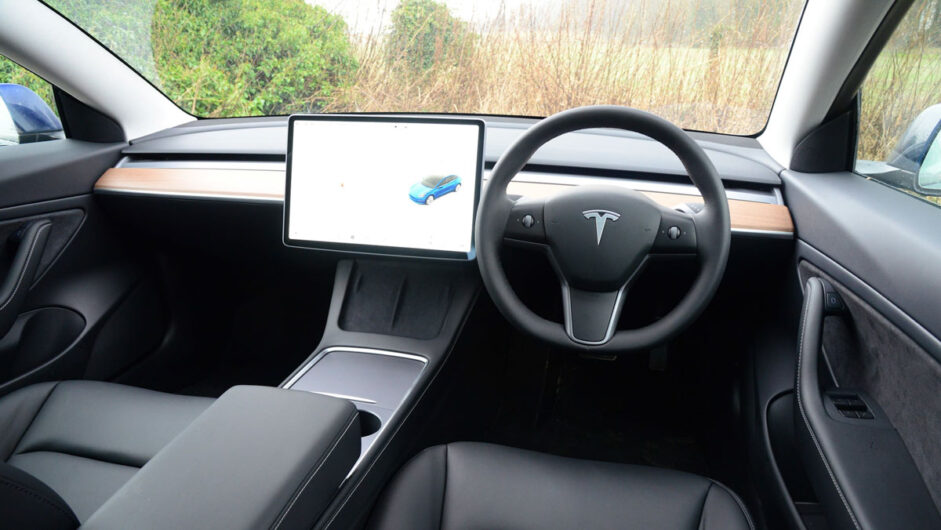
What this does is unlock the interior’s real party piece, with utterly fantastic front visibility due to the lack of obstructions and its very low scuttle. It really is an almost panoramic view down the nose of the car, something augmented by the large front window glass. All models also come with a glazed roof, made up of an unusual combination of a large single-pane rear windscreen that runs right up to the centre beam of the roof and a second piece of glass then fills in the gap to the header rail and front windscreen, leaving a cabin that feels open and luxurious with light.
New for the 2021 model year is a redesigned centre console, which mercifully removes the scratch-prone glossy finish for a covered cubby and felted phone rest with in-build wireless charging for two devices. Build quality inside is appreciably better as a result. All is not perfect, though. The seats are terrible, and feel typically American soft and squishy, while some of the plastics are quite harsh. Not everyone will immediately gel with the minimalist aesthetic, but like the powertrain Tesla pioneered, so too will this style of interior soon find itself being emulated, if not replicated throughout the industry. Just look at the new Golf.
Design
Whereas the interior design really does take full advantage of Tesla’s innovative stance and technical package, exterior styling is perhaps less successful. Still working on a version of the original Tesla Model S Concept that was penned by Henrik Fisker, the Model 3’s more cab-forward stance and low scuttle leave the Model 3 looking a little dull from some angles, and downright odd from others. At any angle from straight-ahead to a front three-quarter, the vast windscreen and low nose look out of proportion and top-heavy. The nose, bereft of any real heavy detailing or graphics aside from the LED headlights, is also dull rather than clean.
To hide the low scuttle, the Model 3 has a large amount of wedge in its profile, with the shoulderline and glazing rapidly rising towards the short, pert tail. Due to the single-piece rear windscreen and roof glass, the bootlid actually opens up like it would on a saloon, revealing a well-sized boot accessible through a relatively small opening. Perhaps an example of Tesla’s relative lack of experience is the bootlid’s propensity to dump all the water collected into the boot upon opening, as it seems to just miss the boot guttering and splat right inside the opening. So too the headlights are merely average (quite terrible, in fact), the doors clunk with a disconcerting fragility, the key card (although a phone app also works) sometimes failed to open the doors for us, leading to a albeit short-lived panic of being locked out in a random location, and the rear lights quickly filled with condensation as if a small dumpling steamer was in use under the rear parcel shelf.
Most of the Model 3 feels like a genuine breath of fresh air though, and its reasonable price point makes the build quality less of an issue than on a $150k Model X with panel gaps big enough to swallow whole sandwiches and doors that won’t open in the pouring rain. Tesla still has some way to go before it starts building cars that make you feel confident about their longevity, but it might just have built sufficient enthusiasm to keep going long enough to see the last of these problems through.
This article originally appeared at evo.co.uk
Copyright © evo UK, Dennis Publishing

